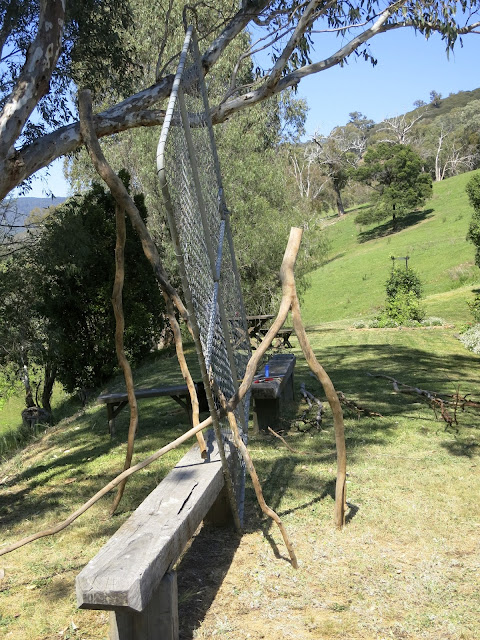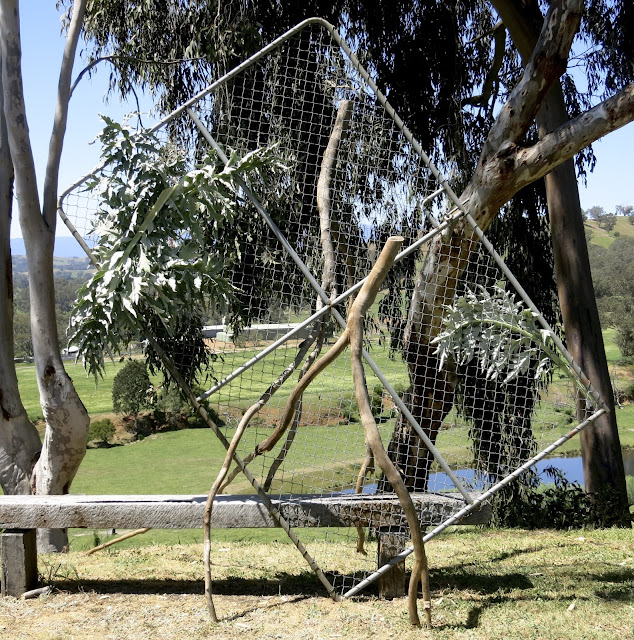I was recently advised of a website that has excellent information about the flora and fauna that occupy the transitional places along the coast of south-west Victoria, between the sea and inland. It was created by the 'Friends of the Bluff' *. The bluff in question being a feature at the mouth of the Barwon river about 20kms to the east of Torquay. On the righthand side of the website are three, free, downloadable booklets with great content and photographs. (Thank you for the information, Margot). There are similar environmental niches along the beaches and cliffs at Torquay.
A week before Christmas we experienced a dense morning fog that resulted in some lovely lighting effects on the beach.
Here you can see sunlight silvering the water while some early morning surfers wait to catch a wave.
Looking from the eastern end of the beach the sun was spotlighting the yellow of the cliffs.
Below two photos from the O'Keefe Family Christmas luncheon organised by Laurie's sister, Margaret.
Tables set for 28 family members and friends in the Flemington Community House.
Nola's Christmas tree in a vase.
I am writing this post on a pleasantly cool Boxing Day following a Christmas Day with 35 Celsius temperatures. The heat has finished-off most of the hydrangea flowers. So the photo below is a re-working of last week's arrangement with some additional material, Bursaria spinosa.
I have used the lines of the bursaria to make an elevated focus above the vessel thereby creating the Sogetsu curriculum exercise 'showing lines at the base' of the arrangement.
Wishing you peace at Christmas-time and in the New Year
Christopher
26th December 2015




















































